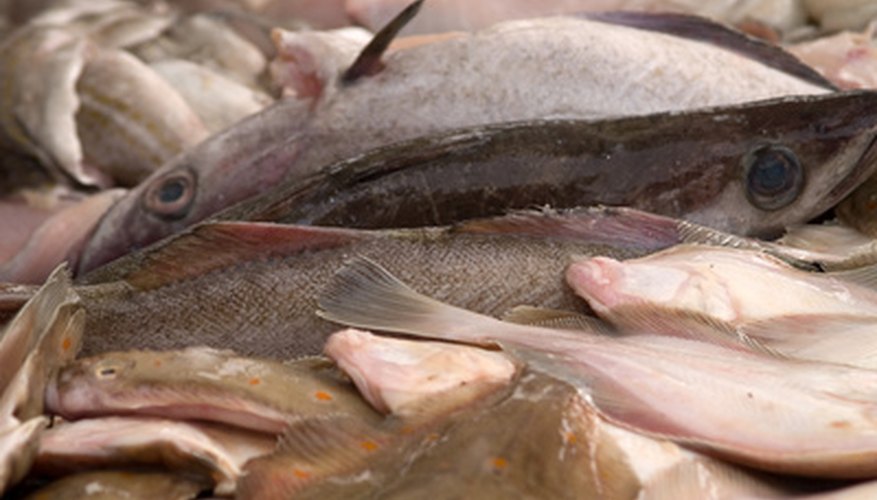Numerous species of fish available at the market come in a variety of cuts. A staple in the diet of human beings long before the advent of agriculture, fish has historically been abundant, cheap, and relatively easy to catch and prepare. The ocean yields 1361kg. of edible fish per cubic acre, far surpassing the edible yield of an acre of soil. Fish is an excellent source of protein and healthy fatty acids.
Fillet
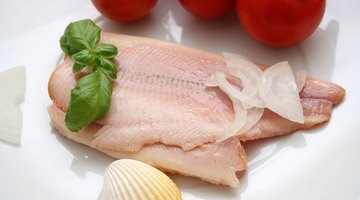
A fillet is a cut that removes the skin and bones and is sliced parallel to the spine. An example of a fillet (from the French word 'fillet') is a slice or a side of salmon or fillet of sole. Among other varieties, cod, perch, trout, salmon, bass, walleye, and whitefish are usually prepared this way. A fillet is one of the more popular cuts of fish because it is easy to eat, although it can still retain a few small bones.
- A fillet is a cut that removes the skin and bones and is sliced parallel to the spine.
- A fillet is one of the more popular cuts of fish because it is easy to eat, although it can still retain a few small bones.
Steak or Darne
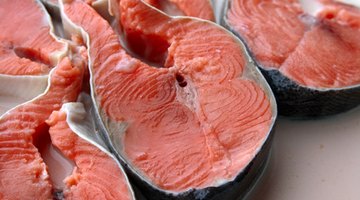
A steak or darne is a thick, cross-section cut around the fish, perpendicular to the spine. Steaks often retain part of the backbone. Swordfish, tuna, and salmon are usually cut into steaks. Typically from ½ to 1-inch thick, steak cuts are skinned and scaled, although salmon steaks usually retain the skin.
- A steak or darne is a thick, cross-section cut around the fish, perpendicular to the spine.
- Typically from ½ to 1-inch thick, steak cuts are skinned and scaled, although salmon steaks usually retain the skin.
Supreme
A supreme cut is a slice of fish cut from a fillet at a slant, and is considered the best and choicest cut of fish. Also called a pavé, a supreme cut removes all bones in the fillet.
Butterfly or Cutlet
A butterfly or cutlet begins with a fillet. One side of the fish is sliced from behind the head, around the belly, and tapered toward the tail. The process is repeated on the other side of the fish, producing a connected or double fillet.
Dressed and Pan-Dressed
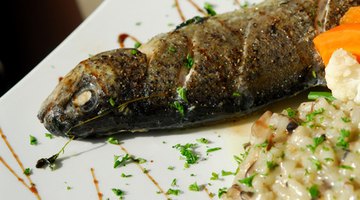
Upon request, most markets will dress a whole fish, free of charge. A dressed fish is scaled and has all internal organs removed. A pan-dressed fish also has its fins, tail, and head removed.
Special Cuts
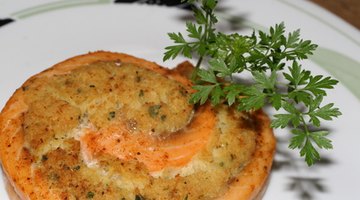
In addition to common cuts of fish, there are several special cuts used in certain recipes.
Goujon is a fillet strip that is floured, egg washed, and coated with breadcrumbs.
- In addition to common cuts of fish, there are several special cuts used in certain recipes.
- Goujon is a fillet strip that is floured, egg washed, and coated with breadcrumbs.
Tronçon is a fish with a flattened body such as flounder, halibut, sole, or turbot, cut on the bone.
Paupiette is a fillet that is stuffed and rolled.
Cravatte is a fillet tied into a knot.
Delice is a fillet that is neatly stuffed and folded.
En-Lorgnette is a fillet cut into two slices, leaving one intact and the other rolled.
Colére is sautéed or battered, and fried after the skin, eyes, gills and fins are removed.
Selecting Fish
Unless frozen, fish has a fairly short shelf life. Fresh fish is best when prepared on the same day that it’s purchased. Choose fish that smells fresh, like clean water. Avoid fish that has a pungent, fishy odour. When you press into the skin, it should be resilient rather than leaving a finger impression. Eyes should be bright, bulging, and moist when selecting a whole fish. Under the dorsal fins, gills should be rich red or pink, not light brown or grey. For top quality frozen fish, look for the letters FAS, which means the fish has been frozen at sea. FAS fish is flash-frozen at extremely low temperatures on-board a fishing vessel only seconds after being caught.
- Unless frozen, fish has a fairly short shelf life.
- For top quality frozen fish, look for the letters FAS, which means the fish has been frozen at sea.
